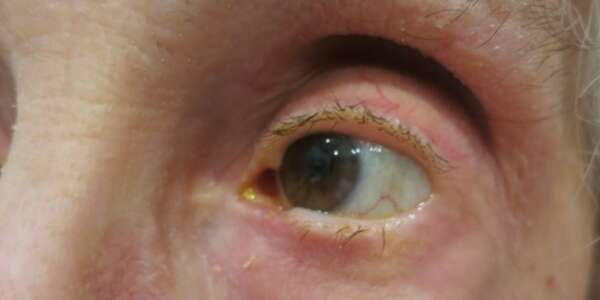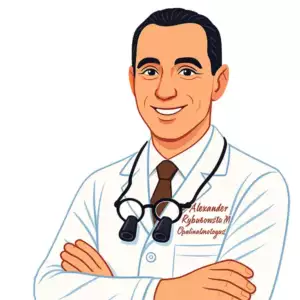Skin cancer doesn’t discriminate; it can show up even on the thin, sensitive skin of your eyelids. Acting fast with a precise diagnosis and treatment plan is the best way to minimize risks and get back on track. When skin cancer strikes the eyelid, specialized eyelid reconstruction steps in to bring back both function and appearance after the tumoris removed.
Spotting Eyelid Skin Cancer
Catching it in time is half the battle. Here’s a quick guide to the main types of eyelid skin cancer that require eyelid reconstruction:
1. Actinic Keratosis (AK)
AK shows up as rough, scaly patches on sun-exposed skin. While it’s not cancer yet, it could turn into squamous cell carcinoma if overlooked.
2. Basal Cell Carcinoma (BCC)
This is the most common type of eyelid cancer, making up about 80% of cases. It often appears as a shiny, firm bump with tiny blood vessels and sometimes an ulcer at the center. BCC usually settles in the lower eyelid or inner corner of the eye. The good news? It rarely spreads to other areas but can dig deeper into the surrounding tissue. Early treatment with complete surgical removal has excellent success rates.
3. Squamous Cell Carcinoma (SCC)
SCC is less common than BCC but more aggressive, accounting for around 16% of eyelid skin cancers. It’s typically a red, raised patch that might crust over or ulcerate. It has a higher risk of spreading and needs prompt removal.
4. Sebaceous Carcinoma
This rare cancer mainly affects older adults and can be mistaken for a stye or chronic eyelid inflammation. It’s more serious, so early detection is crucial to avoid complications.
5. Melanoma
Melanoma on the eyelid is rare but highly dangerous. It can spread quickly and be life-threatening if not caught early. Spotting the difference between a benign mole and melanoma is key. If diagnosed, doctors will need to check if it has spread beyond the eyelid.
After and Before Eyelid Reconstruction after skin cancer excision
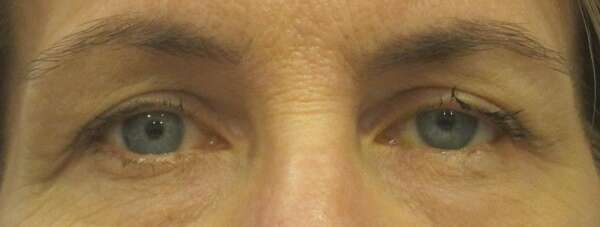
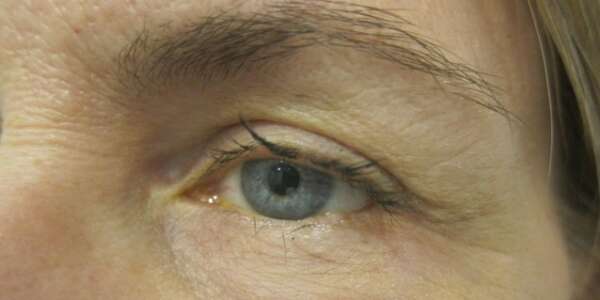
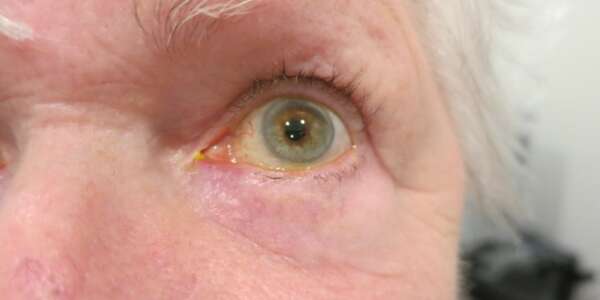
Staying Safe
Early detection is your best bet. Regular skin checks, avoiding peak sun hours, and using sunscreen are simple but powerful ways to reduce your risk. Statistics show that treating skin cancer in its early stages has a success rate of over 95%. Keep an eye out for any changes in your skin, and visit a dermatologist or oculoplastic surgeon if anything looks off.
What to Expect from Eyelid Reconstruction Surgery
Treating eyelid skin cancer usually means a well-coordinated, two-step surgical process to ensure the best results.
Step 1: Mohs Surgery
Mohs surgery is a meticulous procedure performed by specially trained dermatologists. The surgeon removes the affected tissue one layer at a time, checking each layer under a microscope to ensure all cancer cells are gone before moving on. This technique preserves as much healthy tissue as possible while ensuring the cancer is completely removed. Cure rates for non-melanoma skin cancers with Mohs range from 97% to 99.8%.
Step 2: Eyelid Reconstruction
Next comes the reconstruction phase, led by an oculoplastic surgeon. Depending on how large or where the defect is, reconstruction might happen the same day or shortly after. The aim is to repair the eyelid so that it looks and functions as naturally as possible. Options might include skin grafts or local flaps personalized to each patient’s needs.
Trustworthy Care Nearby
Dr. Alexander Rabinovich in New York is a well-regarded expert for those looking for specialized eyelid reconstruction. Patients can reach out through the office’s online chat or book an appointment via ZocDoc.
What Comes After Eyelid Reconstruction Surgery
Recovery time depends on the specific type of surgery you undergo, but most patients experience initial swelling and discomfort that subsides within a few weeks. Regular follow-up visits help monitor healing and ensure everything is correct. Proper aftercare is crucial in avoiding complications or a return of the cancer.
Moving Forward with Confidence
Reconstructive surgery after eyelid cancer is more than just a repair job—it’s about restoring comfort and confidence. Patients can expect positive results thanks to advanced techniques like Mohs surgery and skilled reconstruction. If you or someone close to you is dealing with eyelid cancer, acting fast can make all the difference. In New York, Dr. Alexander Rabinovich provides compassionate care and expertise—reach out and take that step toward healing and peace of mind.
BEFORE
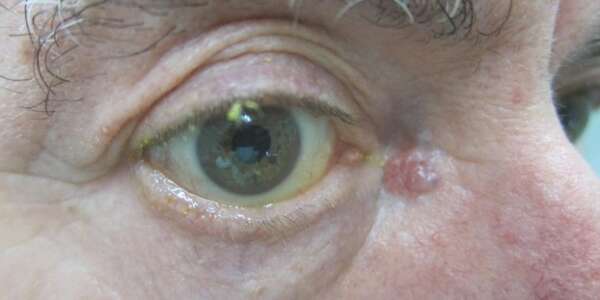
AFTER
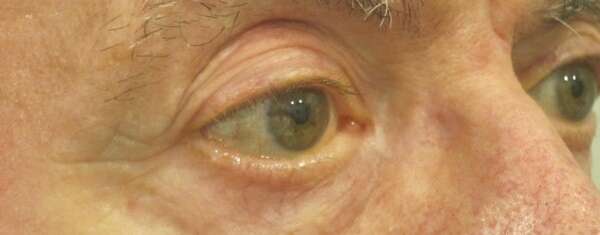
BEFORE
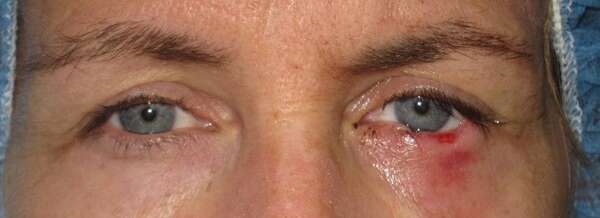
AFTER

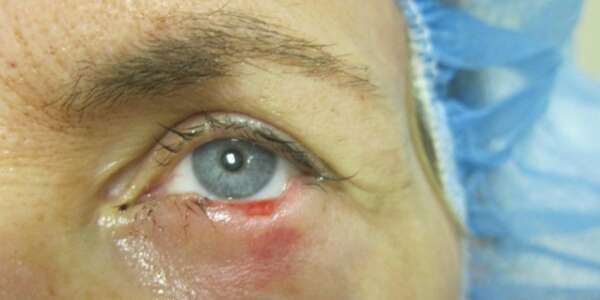

BEFORE
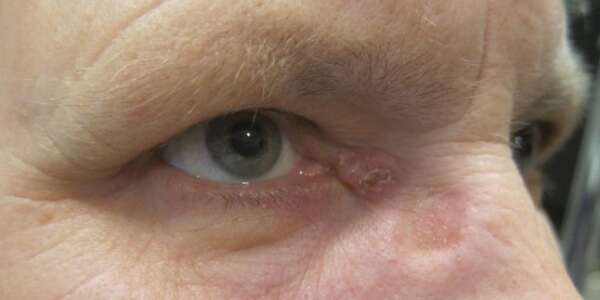
AFTER
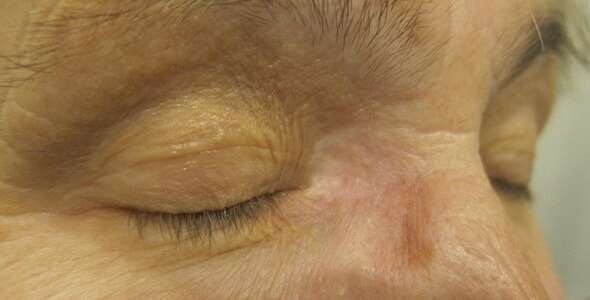
BEFORE
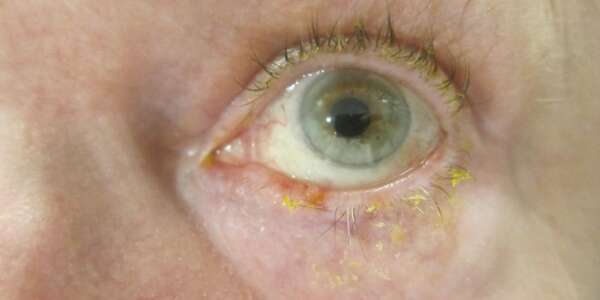
AFTER

BEFORE
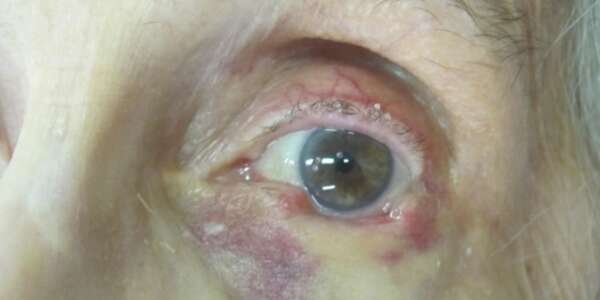
AFTER
